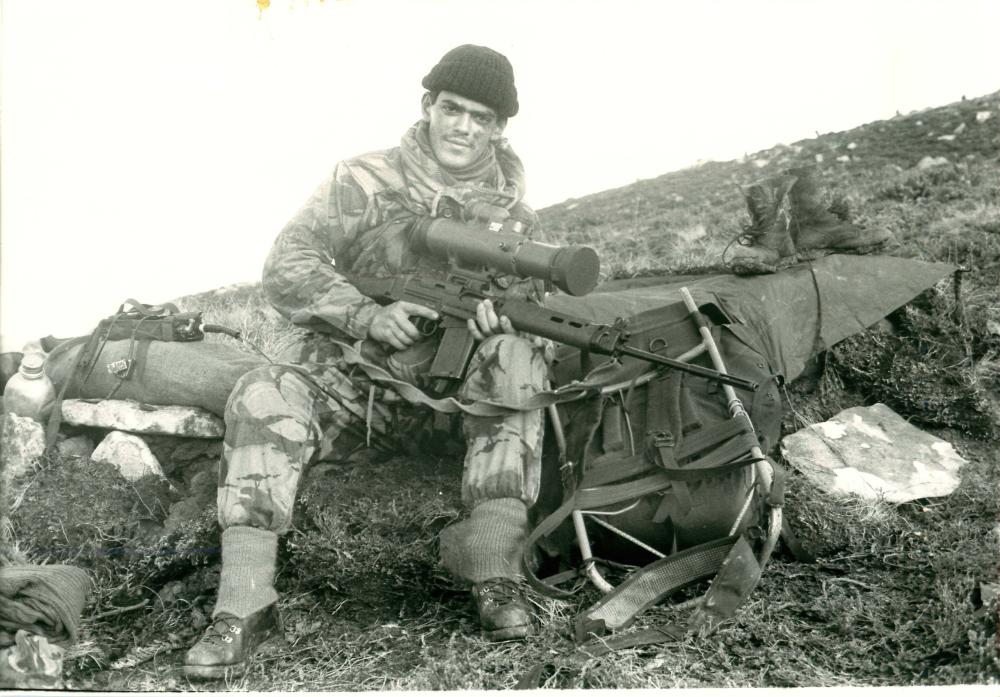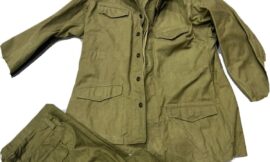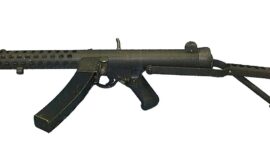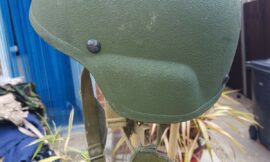The L1A1 Self-Loading Rifle (SLR), also known as the SLR or Inch Pattern FAL, is a variant of the FN FAL battle rifle that was manufactured under license in the United Kingdom and used extensively by British and Commonwealth forces during the Cold War era and beyond. It is one of the most iconic rifles in British military history and has left a lasting legacy due to its reliability, firepower, and adaptability.
Historical Background
The L1A1 SLR traces its origins to the adoption of the FN FAL by NATO countries, including the United Kingdom, in the 1950s. Recognizing the advantages of the FAL’s design and the effectiveness of the 7.62×51mm NATO cartridge, the UK sought to adopt a variant of the FAL for its armed forces. In 1953, a license agreement was reached with Fabrique Nationale (FN) to produce the FAL in the UK.

A United States Marine with a British L1A1 SLR, during a training exercise as part of the Gulf War‘s Operation Desert Shield.

L1A1 Self Loading Rifle (SLR) | ParaData
Design and Features
The L1A1 SLR shares many design characteristics with the original FN FAL, but it is based on the “inch pattern” FAL rather than the “metric pattern” used by FN. Key features of the L1A1 SLR include:
- Chambering: Like the FN FAL, the L1A1 SLR is chambered in 7.62×51mm NATO, a powerful cartridge suitable for long-range engagements and providing significant stopping power.
- Gas-Operated Action: The SLR operates on a gas-operated system with a short-stroke piston, ensuring reliability and minimizing recoil.
- Selective Fire: Early versions of the SLR had selective fire capability, allowing for both semi-automatic and fully automatic fire modes. However, due to concerns about control in full-auto mode and ammunition conservation, many SLRs were later converted to semi-automatic only.
- Robust Construction: The SLR is known for its robustness and durability, capable of withstanding harsh conditions and rough handling.
- Adjustable Sights: The SLR features adjustable iron sights for accurate shooting at different distances.
- Simplicity: The SLR’s design emphasizes simplicity and ease of maintenance, crucial for military operations.
Variants
While the L1A1 SLR was primarily produced in a standard infantry rifle configuration, there were some variants and modifications over its service life:
- Wood and Synthetic Furniture: The SLR initially featured wooden furniture but later models introduced synthetic materials to reduce weight and improve durability.
- L2A1 and L2A2: The L2A1 was a variant of the SLR adapted for use as a light machine gun, featuring a heavy barrel, bipod, and extended magazine capacity. The L2A2 was an improved version of the L2A1.
- Various Marks (Mk): Different marks of the SLR denoted updates and modifications made over time, such as improved sights or other minor enhancements.
Military Use
The L1A1 SLR saw extensive service with British and Commonwealth armed forces:
- Cold War: The SLR served as the standard infantry rifle for the British Army and other Commonwealth nations throughout the Cold War era. It was widely used during various conflicts and deployments, including peacekeeping missions.
- Falklands War: During the Falklands War in 1982, the SLR was the primary rifle used by British troops, demonstrating its effectiveness in combat.
- Post-Cold War: The SLR continued to be used into the 1990s and early 2000s before being gradually replaced by more modern rifles such as the SA80 series.
Performance
The L1A1 SLR is highly regarded for its performance attributes:
- Accuracy: The rifle’s design and powerful cartridge provide excellent accuracy and effective range, suitable for engagements up to several hundred meters.
- Reliability: Known for its reliability under various conditions, including adverse weather and terrain.
- Handling: The SLR’s balance and ergonomics make it relatively comfortable to shoot and carry for extended periods.
Legacy and Influence
The L1A1 SLR has left a significant legacy in military history:
- Iconic Status: The SLR remains a symbol of the British military during the Cold War era and is remembered fondly by many veterans.
- Training and Ceremonial Use: Some SLRs have been retained for training purposes and ceremonial duties, reflecting their historical significance.
- Impact on Rifle Design: The SLR’s design principles and operational experience influenced subsequent British rifle developments, including the SA80 series.
Conclusion
The L1A1 SLR, based on the FN FAL design, was a cornerstone of British and Commonwealth infantry weapons during the Cold War era. Its robustness, reliability, and effectiveness in combat made it a trusted companion for soldiers in numerous conflicts and deployments. While no longer in frontline service, the L1A1 SLR remains an enduring symbol of British military prowess and the era of the battle rifle.


